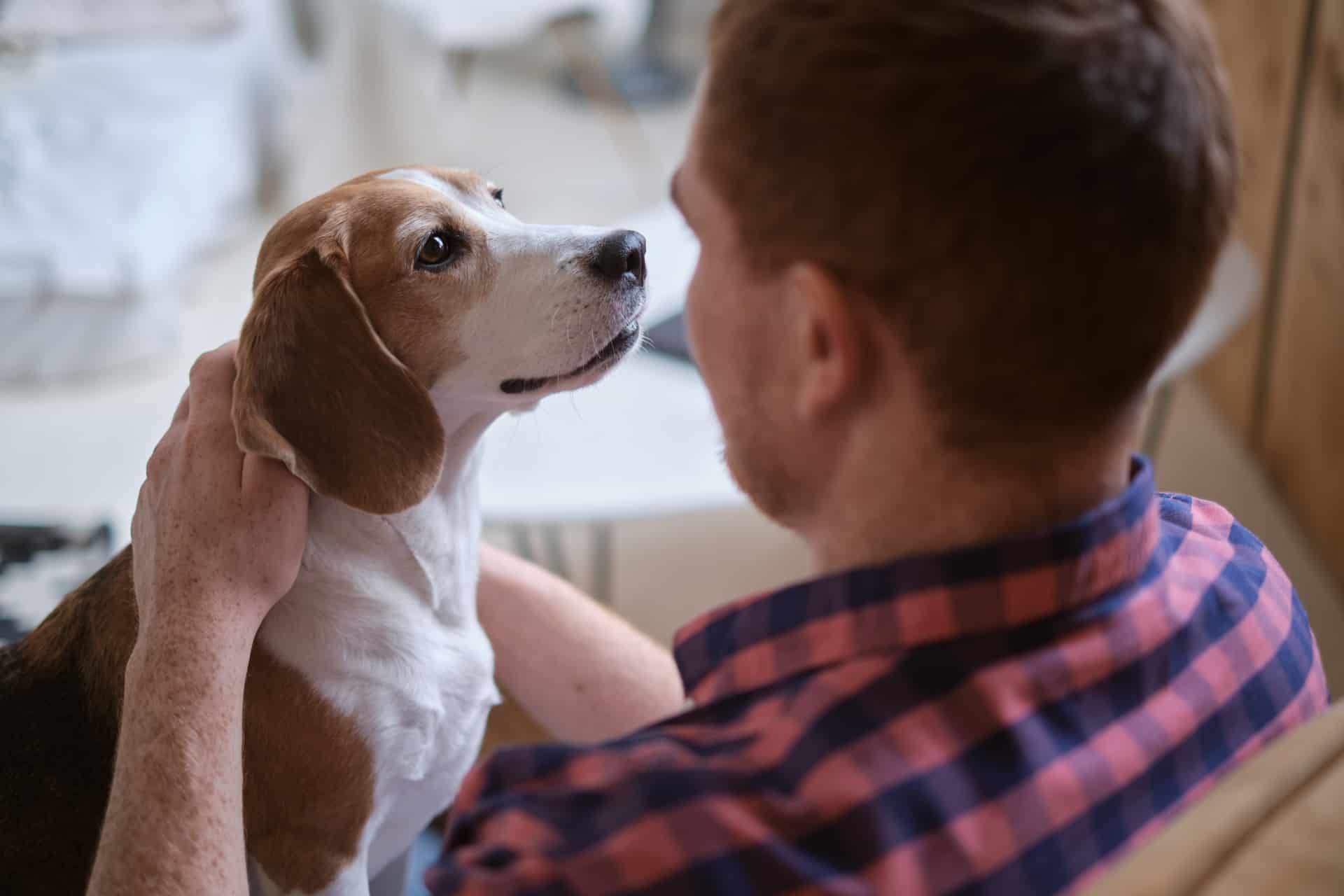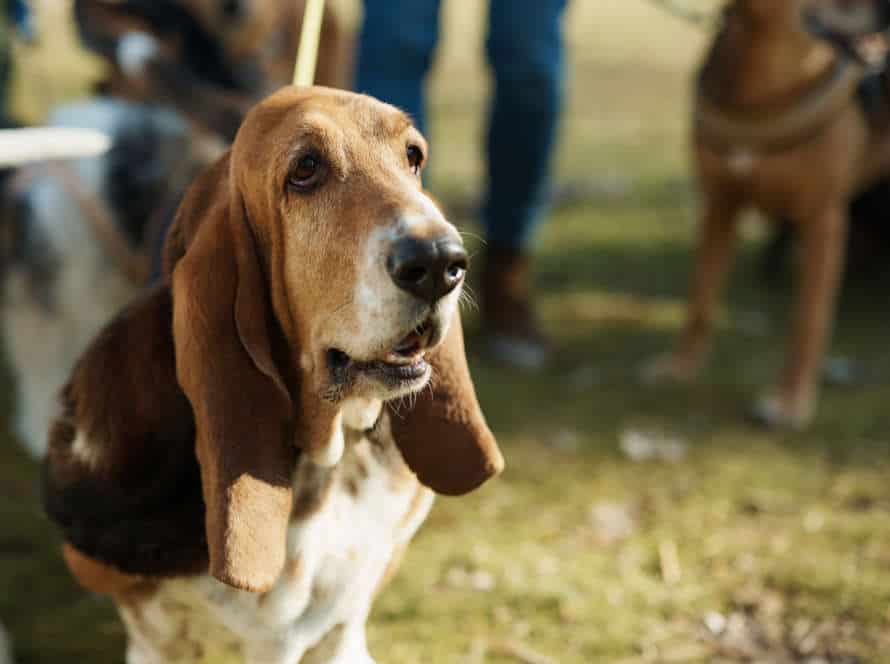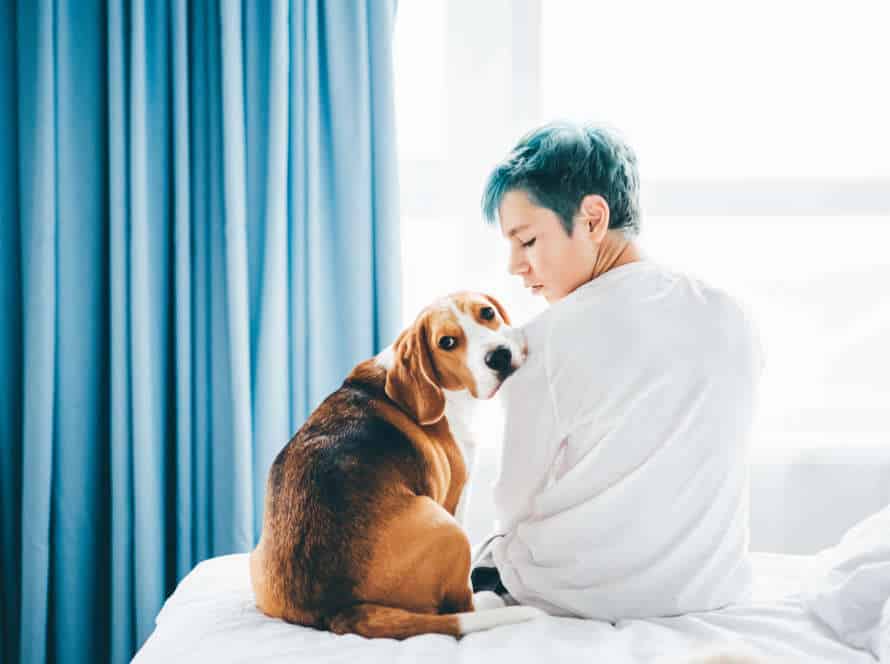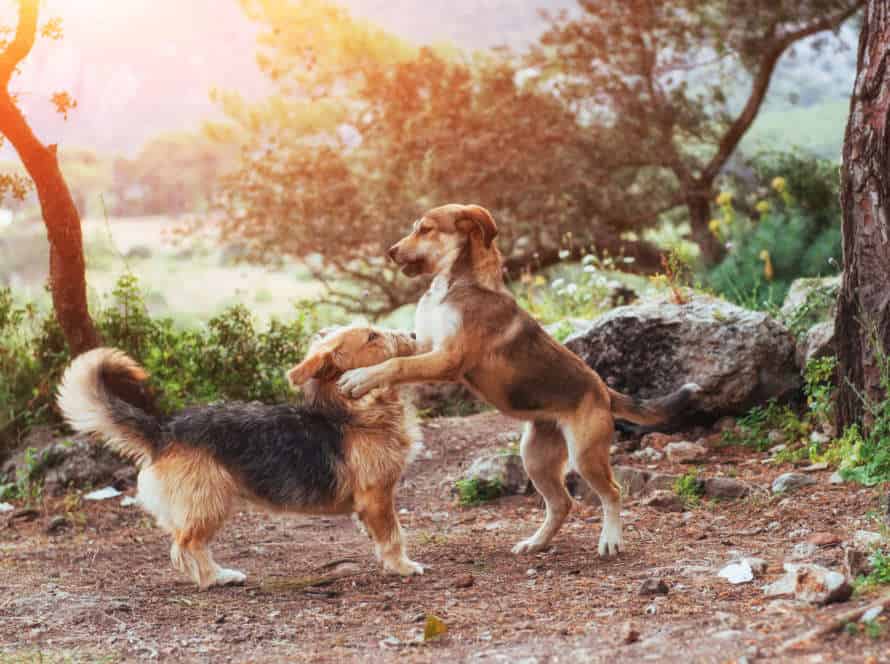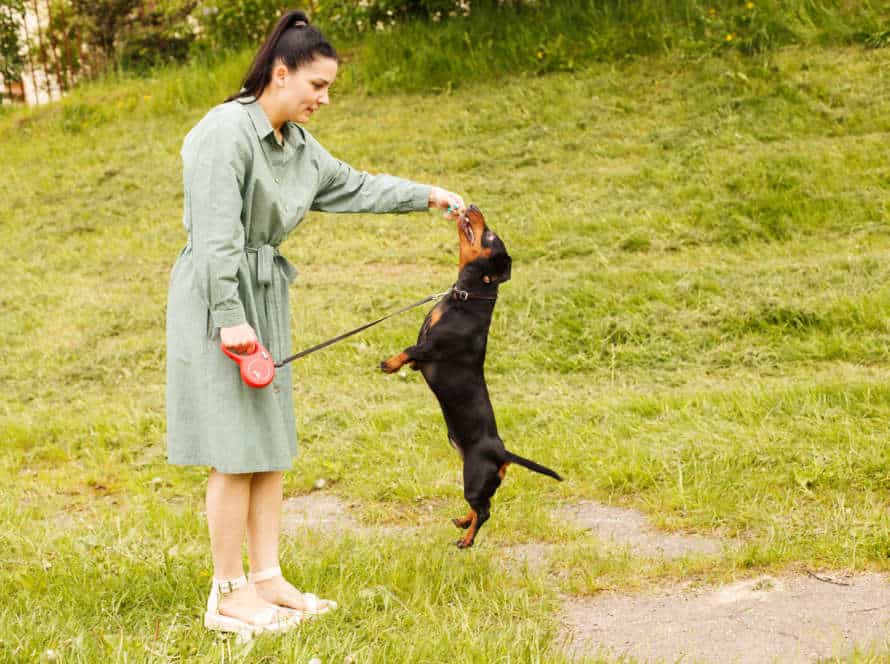Canine Calming Signals: How to Read and Respond
Canine calming signals are a way dogs communicate stress or unease. It’s important for pet owners to learn how to identify and respond to them.
Look out for these signals:
- Yawning: Can mean they’re stressed or uncomfortable.
- Lip licking: Another sign of stress or unease.
- Turning away: If they turn their head or body away from someone, they may need space or be uncomfortable.
Pro tip: If your dog shows any of these calming signals, give them space and remove them from the stressful situation. Responding with patience and understanding will help them feel more secure.
Understanding Canine Body Language
Canine body language can give you an insight into your pup’s feelings and thoughts. Dogs use certain signals to communicate with their surroundings and other dogs. They can be of great help in building trust and respect between you and your pup. Here are some common canine calming signals and how to interpret and react to them:
Why it’s important to understand dog body language
Knowing your dog’s body language is essential for all pet owners. Our furry friends use body language to express their feelings, needs, and wants. It’s important for us humans to read and respond to these signals.
Aggression can be caused by anxiety, boredom, or fear of submission. Differentiating between a wagging tail that means friendly versus one that means caution, helps avoid aggressive encounters. Body postures can also give clues to their state of mind – relaxed means comfort, tense suggests discomfort or aggression.
Calming signals like yawning, lip licking, and avoidance are ways dogs communicate stress or anxiety. By recognizing these, a pet owner can de-escalate a potentially dangerous situation and make their dog feel safe.
Pro tip: Observe your dog’s body language and behavior. This will help you understand its specific needs, moods, and improve your relationship with them.
How dogs communicate with body language
Dogs use body language to express their emotions, thoughts and intentions. As a dog owner, it’s important to understand these signals.
Yawning, panting and licking can mean your pup is anxious or worried. On the contrary, wagging tails, jumping and a relaxed posture show happiness and readiness to play.
We can learn to read our pup’s body language cues. This helps us understand their mental and physical states. We can then make them feel safe and comfortable.
Common mistakes pet owners make when reading body language
Owners may not understand doggie calming signals when reading their pet’s body language. Such signals tell a dog they’re anxious, stressed, and are trying to reduce their worry. Examples include:
- yawning
- lip or nose licking
- head turning away
- avoiding eye contact
- panting too much
- shaking off as if soaked
If you see these, try to take your pet out of the situation or give them space. Don’t punish or scold them. Comfort and help them relax instead.
By understanding calming signals and responding correctly, your pet will feel more secure and trust you. This leads to a better pet-owner relationship.
Calming Signals in Dogs
Dogs utilize calming signals to calm potential stress. These signals can be body language or vocalizations to communicate with other dogs and humans. It’s a great tool for owners to learn how to read and react to their pup’s needs. Knowing the signs of calming signals help make a peaceful and stress-free environment for everyone.
Definition and explanation of calming signals
Calming signals are subtle behaviors that dogs show when they’re stressed, anxious, or uncomfortable. They use nonverbal communication to avoid conflict and calm down a situation. Examples of this include yawning, lip-licking, turning away, shaking off, and not making eye contact.
It’s important for dog owners and handlers to know these signals. Recognizing them and responding right can stop aggressive behavior and help build a positive bond between dogs and their humans.
Pro Tip: When you see your dog exhibiting calming signals, get them out of the situation that’s upsetting them. Give them a quiet and safe area to relax.
Understanding different types of calming signals
Calming signals are a dog’s body language for communicating. These signals help ease tension and avoid conflict with other dogs or people.
Yawning: Stress-reliever for dogs, can signal anxiety.
Licking: Licking noses or hands to show friendliness and appease.
Turning away: Dog turns head away to show disinterest or discomfort.
Sniffing the ground: Dogs use this signal to calm themselves or show they’re not a threat.
These signals are subtle. Understanding them is key to having a positive experience with your pup.
How to recognize and interpret calming signals in dogs
Dogs speak with body language. Understanding and responding to calming signals can help build a better bond with your pup and stop unwanted actions.
Yawning? Stressed or uncomfortable.
Lip licking? Anxiety or nervousness.
Head turning away? Uncomfortable or uninterested.
Sniffing the ground? Self-soothing or not wanting to talk.
Know these signals and react properly. If you see your dog showing signs of stress, remove them or give them a calming activity, like a chew toy.
Responding to Calming Signals
It’s important to recognize your dog’s calming signals and respond suitably. These are body language signals that canines use to speak with each other and their human handlers. Knowing and answering these ‘calming signals’ can form a trusting, respectful bond between you and your canine. Let’s discover how to read and answer your pup’s calming signals.
How to respond appropriately to calming signals
Calming signals are a pup’s way of expressing when they’re feeling anxious or distressed. Knowing and reacting in the right manner to these signals can help stop hostile behavior and improve your connection with your pup.
Here are several tips for responding to calming signals:
- Yawning: Yawning can mean stress and unease. React by getting away from the dog or reducing any things stressing them.
- Licking: Licking could be a way for them to comfort themselves. Respond by staying calm and not making any sudden movements.
- Turning away: Turning away could signal they want to de-escalate a situation. Allow them space and reduce any stressors.
- Freezing: Freezing can mean fear and worry. Respond by eliminating stressors and avoiding sudden movements.
By responding correctly to calming signals, it can help your pup feel safer and more relaxed in their environment. This will lead to a much better relationship between you and your pup.
Understanding when not to respond to calming signals
Calming signals are body language cues used by canines to show stress, anxiety, or unease. Knowing these signs can aid you in responding properly to your furry friend’s needs. But, there are also times when not responding to these is imperative.
Here are some of those cases:
- During training: If your pup exhibits calming signals while learning, it likely stems from anxiety. Still, answering to these cues can make training less successful.
- When reprimanding your dog: Calming signals like averting the gaze or not making eye contact could be attempts to avoid punishment. But, if your pup misbehaved, it is necessary to address it and not ignore it.
- When there is a threat: If your fur baby is warning you about a potential danger, answering the calming signals can put both of you in peril. Quickly take action to remove the threat and keep your pup safe.
Tip: Responding to your pup’s calming signals can help enhance your bond and cultivate a safer, comfier atmosphere for them. But, being aware of when to not respond and when to act fast is also key.
Techniques for calming a stressed dog
Calming a stressed pup is key to their wellbeing and joy. An effective way? Respond to calming signals. These are body language cues they use to show stress, anxiety, or unease. Here are a few to look for:
- Yawning – They show this when anxious or stressed. This signals that they need to relax.
- Lip-Licking – This is how dogs show their anxiety. React calmly and relax them.
- Turning Away – If they turn their head or body away, they feel uncomfortable. Give them space and remove them from the situation.
By responding to calming signals, you can help your dog feel more relaxed and reduce their anxiety.
The Importance of Proper Communication with Your Dog
Canine calming signals are special behaviors dogs do to show fear, worry, or stress. Knowing and understanding these signs can help build a stronger bond between you and your pup. Let’s talk about the importance of talking pet-to-person and how canine calming signals can help.
The role of communication in dog training
Communicating is a vital part of dog training. It helps you and your pup build a strong relationship. Make sure you communicate effectively to make sure your commands are clear. Here are some tips:
- Use positive reinforcement for good behavior.
- Use simple verbal commands and signals.
- Pay attention to your dog’s body language.
- Establish consistent routines for training.
- Know canine calming signals like lip licking and head turning.
- Reward good behavior with treats, toys, or praise.
Building a strong relationship with your dog through communication
To build a strong relationship with your pup, effective communication is key. It makes training easier and creates a lasting bond.
Canine calming signals give insight into how your dog reacts to you.
Yawning? This might mean your pup is anxious or uncomfortable.
Lip licking? Stress and nervousness could be the cause.
Turning away? Could be stress or avoiding confrontation.
Pro tip: Understand your pup’s responses. Use positive cues like treats or toys to reinforce good behaviors. Consistency, patience, and positive reinforcement will create a lifelong bond with your furry friend.
Common communication mistakes pet owners make and how to avoid them
Pet owners can make mistakes communicating with their furry friends. This can lead to misunderstandings and unwanted behavior. Here are the most common mistakes and how to avoid them:
- Using unclear commands. Pets can get confused by these. Use a consistent vocabulary and tone.
- Ignoring canine calming signals. Dogs show these when they’re feeling stressed or uncomfortable. Ignoring these may make your dog feel unheard, which can cause anxiety and aggression.
- Not paying attention to body language. Just like humans, dogs communicate this way. Not noticing this can lead to miscommunication and aggression.
- Punishing unwanted behavior. This harms your relationship and increases aggression. Instead, use positive reinforcement and redirecting to encourage good behavior.
- Lack of empathy. Pets need love, attention and empathy. Neglecting these needs can cause behavioral issues.
By avoiding these mistakes and understanding your pet, you can have a healthy and happy relationship.
Frequently Asked Questions
Q: What are canine calming signals?
A: Canine calming signals are a series of body language communication cues that dogs use to avoid conflict and diffuse tense situations.
Q: How can I tell if my dog is anxious or stressed?
A: Dogs may exhibit several calming signals that indicate anxiety or stress, including yawning, licking their lips, and avoiding eye contact. Their body may also be tense, with their ears flat or tail held low.
Q: Can I use canine calming signals to calm my dog?
A: Yes, you can use the same calming signals dogs use to communicate with them. Examples of calming signals to use on dogs include avoiding direct eye contact and yawning to signal that you are not a threat.
Q: What should I do if my dog shows aggression instead of calming signals?
A: If your dog shows aggression instead of calming signals, it is important to seek professional help from a qualified dog trainer or behaviorist.
Q: Can all dogs recognize and respond to calming signals?
A: Yes, all dogs should be able to recognize and respond to calming signals, as they are an essential part of their communication repertoire.
Q: Why is it important to understand and respond to canine calming signals?
A: Understanding and responding to canine calming signals is crucial to building a strong bond with your dog and avoiding conflicts or aggression. It can also help you recognize when your dog is feeling stressed or anxious, allowing you to provide the necessary support and care.

